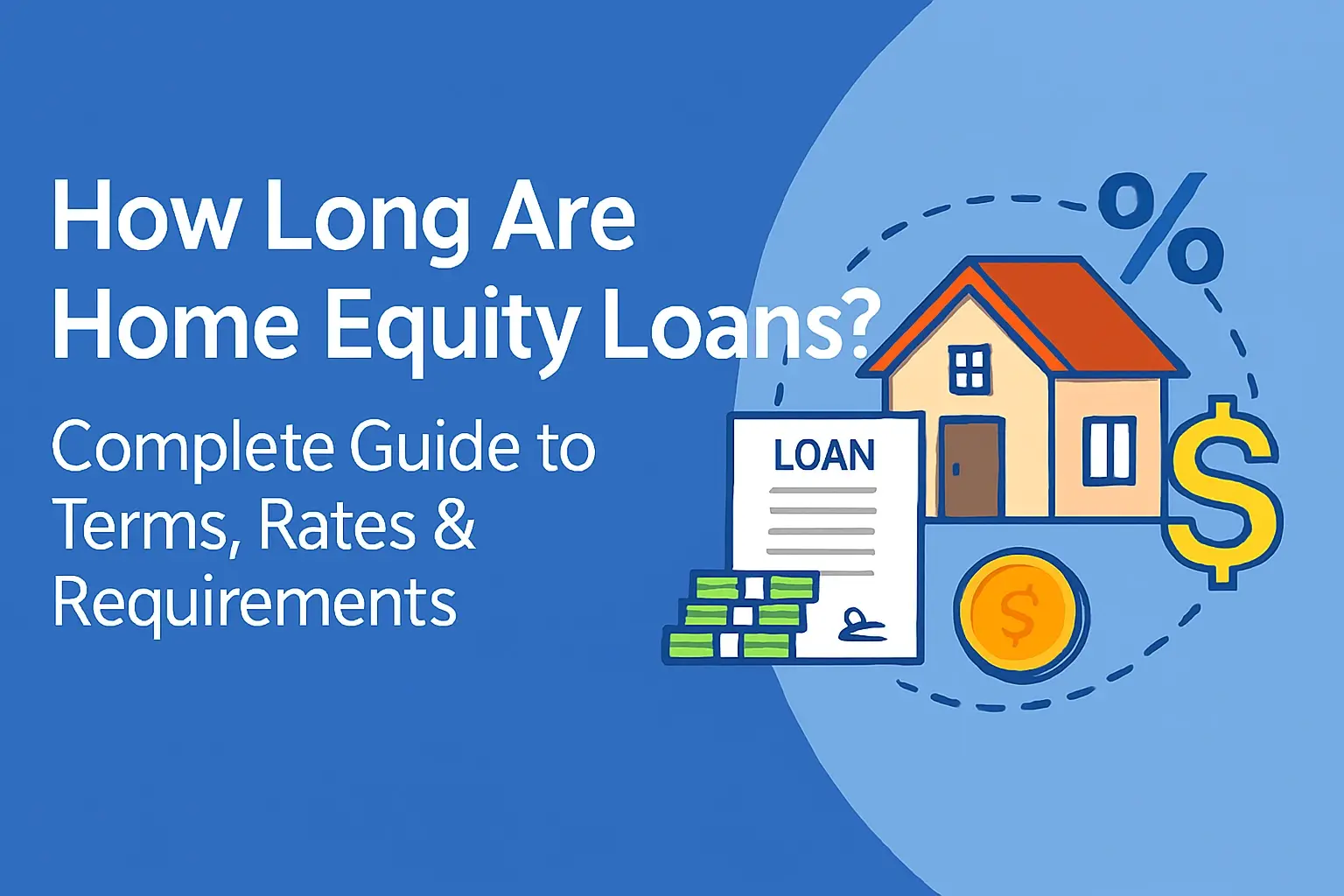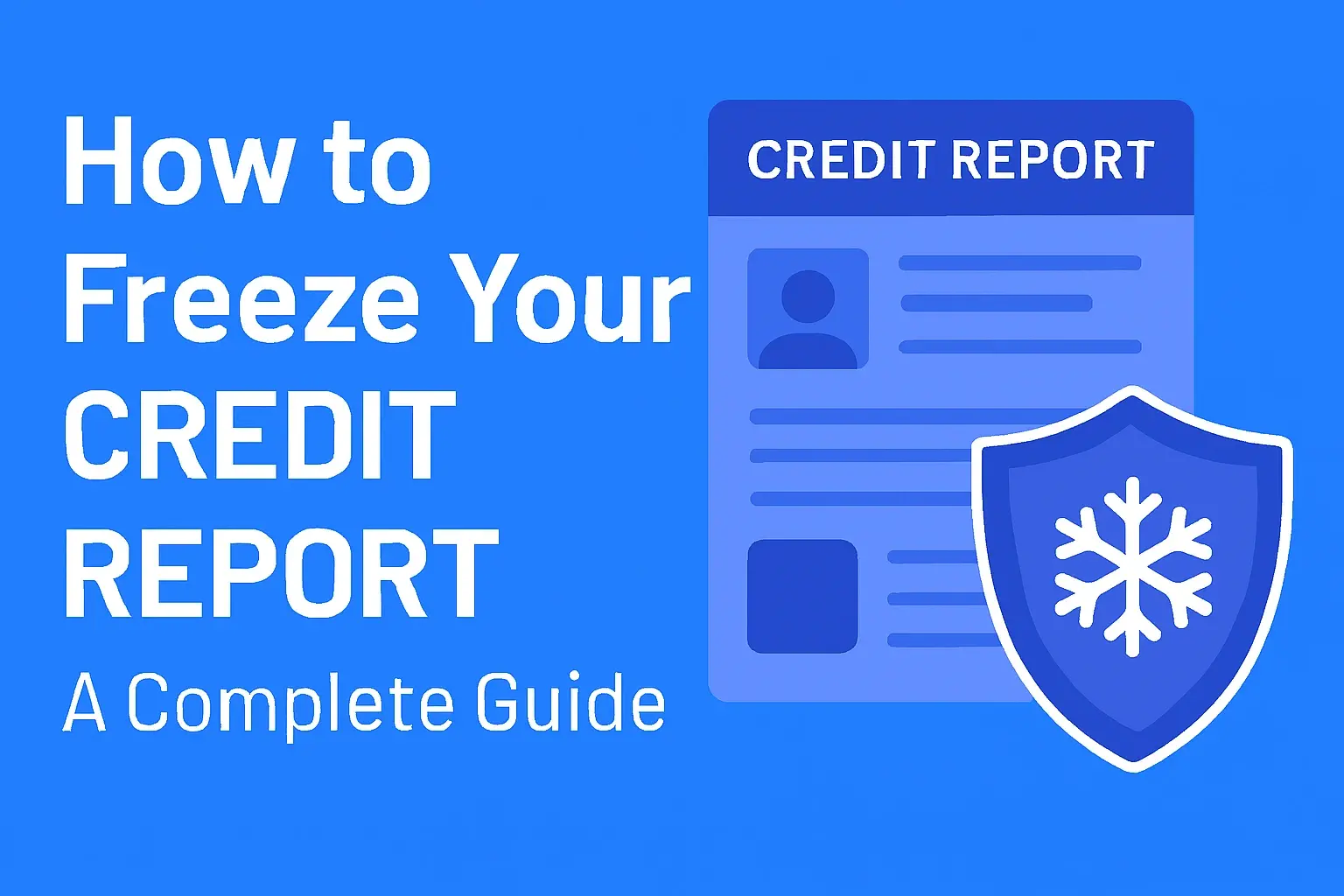-
Posted on: 06 Feb 2025

-
Understanding your credit score is crucial for financial well-being. A 615 credit score falls into the "fair" category, presenting both opportunities and challenges. This guide will break down what a 615 credit score means, how it impacts your financial life, and actionable steps to improve it.
What is a 615 Credit Score?
A 615 credit score is generally considered to be in the "fair" credit range. This means that while it's not a "poor" score, it's also not yet in the "good" or "excellent" categories that typically unlock the best financial products and lowest interest rates. Lenders may view a 615 score with some caution, often associating it with a higher risk of default compared to borrowers with higher scores. However, it's a score that can certainly be improved with diligent effort and strategic financial management. Understanding where you stand is the first step toward achieving your financial goals.
Understanding Credit Score Ranges
Credit scoring models, most notably FICO and VantageScore, categorize credit scores into distinct ranges to help lenders quickly assess risk. While the exact cutoffs can vary slightly between models and over time, the general consensus for 2025 is as follows:
Score Range Category Implications 800-850 Exceptional Best interest rates, highest approval odds for premium products. 740-799 Very Good Excellent approval odds, very competitive rates. 670-739 Good Good approval odds, decent interest rates. 580-669 Fair Approval possible but often with higher interest rates and stricter terms. May qualify for subprime loans. 300-579 Poor Difficult to get approved for credit, high interest rates if approved, significant financial risk for lenders. As you can see, a 615 credit score firmly sits within the "Fair" category. This means you're likely to face challenges when applying for new credit, such as personal loans, mortgages, auto loans, and even some rental applications. Lenders perceive a 615 score as indicating a moderate risk. This doesn't mean you're a bad borrower, but rather that your credit history may contain some negative marks or a lack of positive credit activity. The good news is that the "Fair" range is a significant improvement over "Poor" and offers a solid foundation for improvement. Many lenders offer products specifically for individuals with fair credit, though these often come with less favorable terms.
The key takeaway here is that while a 615 score isn't ideal, it's not a dead end. It's a signal that there are areas in your credit management that need attention. The journey from "Fair" to "Good" or "Very Good" is achievable with consistent, informed action. Understanding these ranges helps you set realistic expectations and develop a targeted strategy for credit repair and enhancement. For example, knowing you're in the "Fair" bracket allows you to focus on specific actions that will most effectively move you into the "Good" bracket, which can significantly broaden your financial options.
How a 615 Credit Score Affects You
A 615 credit score can have a tangible impact on various aspects of your financial life in 2025. Lenders use credit scores to gauge your creditworthiness, and a score in the fair range often translates to less favorable outcomes.
Loan and Credit Card Approvals
When you apply for new credit, such as a personal loan, auto loan, or credit card, a 615 score will likely result in more scrutiny. You might be:
- Denied outright: Some lenders have higher minimum score requirements.
- Approved with higher interest rates: This is the most common outcome. Lenders charge more to compensate for the perceived higher risk. Over the life of a loan, this can cost you thousands of dollars more.
- Approved with lower credit limits or higher down payments: You might get a credit card but with a very low limit, or you might need a larger down payment for a car or home.
- Limited to subprime lenders: These lenders specialize in working with borrowers who have lower credit scores, but their products almost always come with significantly higher interest rates and fees.
Mortgage Applications
Securing a mortgage with a 615 credit score is challenging. While some government-backed loan programs, like FHA loans, might allow scores in this range (often requiring a higher down payment and mortgage insurance), conventional loans will likely be out of reach or come with very high interest rates. A higher credit score is crucial for obtaining a competitive mortgage rate, which directly impacts your monthly payment and the total interest paid over 15 or 30 years. For instance, a 0.5% difference in interest rate on a $300,000 mortgage can cost tens of thousands of dollars more over the loan's term.
Auto Loans
Financing a car with a 615 credit score will likely mean you'll pay more for your vehicle. Dealerships and lenders will often offer rates that are significantly higher than what someone with good credit would receive. This increases your monthly car payment and the total cost of the vehicle. In some cases, you might be required to have a co-signer with better credit to be approved at all.
Renting an Apartment
Landlords increasingly use credit checks as part of their tenant screening process. A 615 score might be considered too risky by some property managers, leading to rejection or a requirement for a larger security deposit or a co-signer. This can limit your housing options.
Insurance Premiums
In many states, insurance companies use credit-based insurance scores to help determine premiums for auto and homeowners insurance. A lower credit score can lead to higher insurance costs, as studies suggest a correlation between credit behavior and the likelihood of filing a claim. This is an indirect but significant cost associated with a fair credit score.
Utility Services
Some utility companies (electricity, gas, water, cell phone providers) may require a security deposit if your credit score is below a certain threshold. This deposit is essentially a buffer for the company in case you fail to pay your bills.
In essence, a 615 credit score acts as a financial barrier, making it more expensive and difficult to access credit and other essential services. The increased costs associated with higher interest rates and fees can significantly strain your budget. However, it's important to remember that these are potential outcomes, and proactive steps can mitigate these effects and lead to better financial opportunities.
Improving Your 615 Credit Score
The journey to a better credit score starts with understanding the factors that influence it. The most common credit scoring models, FICO and VantageScore, consider five primary categories:
Payment History (35% of FICO Score)
This is the single most important factor. Making on-time payments for all your credit accounts (credit cards, loans, mortgages) is crucial. Even one late payment can significantly damage your score. For a 615 score, it's highly probable that past late payments are a major contributor. The key to improvement here is consistency.
Amounts Owed / Credit Utilization (30% of FICO Score)
This refers to how much of your available credit you are using. It's best to keep your credit utilization ratio (CUR) below 30%, and ideally below 10%. A high CUR signals to lenders that you might be overextended. If your 615 score is due to high credit card balances, reducing these balances is a top priority.
Length of Credit History (15% of FICO Score)
This factor looks at how long your credit accounts have been open and the average age of your accounts. A longer, established history generally leads to a higher score. This is not something you can quickly change, but it emphasizes the importance of not closing old, well-managed accounts.
Credit Mix (10% of FICO Score)
Having a mix of credit types, such as revolving credit (credit cards) and installment loans (mortgages, auto loans, personal loans), can positively impact your score. It shows lenders you can manage different kinds of debt responsibly. However, this is a less significant factor than payment history or utilization.
New Credit (10% of FICO Score)
Opening multiple new credit accounts in a short period can lower your score. Each application for credit typically results in a "hard inquiry," which can slightly reduce your score. This factor is more about avoiding unnecessary applications.
For someone with a 615 credit score, the most impactful areas to focus on are undoubtedly payment history and credit utilization. Addressing these two components directly will yield the most significant improvements in the shortest amount of time. It’s about demonstrating to lenders that you are a reliable borrower who manages debt responsibly.
Strategies for Credit Improvement
Improving your 615 credit score requires a strategic and consistent approach. Here are actionable steps you can take in 2025:
1. Pay All Bills On Time, Every Time
This cannot be stressed enough. If you have any past-due accounts, bring them current immediately. Set up automatic payments or calendar reminders to ensure you never miss a due date again. Even one day late can be reported to credit bureaus. For recurring bills like utilities, consider setting up autopay if possible, as many utility companies now report payment history to credit bureaus.
2. Reduce Your Credit Utilization Ratio (CUR)
This is critical. Aim to get your CUR below 30% on each credit card and overall. If you have a credit card with a $1,000 limit and a $700 balance, your CUR is 70%. To improve this, you can:
- Pay down balances: Focus on paying more than the minimum payment on your credit cards, especially those with high balances. Prioritize paying off cards with the highest interest rates first (the "debt avalanche" method) or the smallest balances first (the "debt snowball" method) for psychological wins.
- Request a credit limit increase: If you have a good payment history with a particular card issuer, you might be able to request a higher credit limit. This will lower your CUR if your balance remains the same. Be cautious, however, as some issuers may perform a hard inquiry for this.
- Spread out your spending: If you have multiple credit cards, try to distribute your spending across them rather than maxing out one card.
3. Check Your Credit Reports for Errors
Mistakes on your credit report can unfairly lower your score. You are entitled to a free credit report from each of the three major credit bureaus (Equifax, Experian, and TransUnion) annually at AnnualCreditReport.com. Review them carefully for:
- Accounts you don't recognize.
- Incorrect personal information.
- Incorrect payment statuses (e.g., a paid account showing as delinquent).
- Duplicate negative entries.
If you find errors, dispute them with the credit bureau and the creditor. The process can take time, but correcting errors can lead to a score increase.
4. Avoid Opening Too Many New Accounts
While adding new credit can be part of a long-term strategy, opening multiple accounts in a short period will hurt your score due to hard inquiries and a decrease in the average age of your accounts. Focus on improving your existing credit first.
5. Consider a Secured Credit Card or Credit-Builder Loan
If you have difficulty qualifying for a traditional credit card or need to establish a positive payment history, these tools can be very effective:
- Secured Credit Card: You provide a cash deposit as collateral, which typically becomes your credit limit. Use it for small purchases and pay it off in full each month. This demonstrates responsible credit card use.
- Credit-Builder Loan: You make payments on a small loan, but the funds are held in an account by the lender until you pay off the loan. Your payments are reported to the credit bureaus.
6. Become an Authorized User (with Caution)
If a trusted friend or family member with excellent credit is willing to add you as an authorized user to their well-managed credit card, their positive payment history and low utilization can reflect on your credit report. However, ensure the primary cardholder is responsible, as their negative activity can also hurt you.
7. Be Patient
Credit repair is not an overnight process. It takes time to build a positive credit history and for negative marks to have less impact. Consistent good financial habits over several months to a year will yield the best results.
By focusing on these strategies, you can systematically work towards increasing your credit score from 615 to a more favorable range, opening up better financial opportunities.
Loans and Credit Cards with a 615 Score
Securing new credit with a 615 credit score can be challenging, but it's not impossible. Lenders will perceive you as a higher risk, meaning you'll likely face higher interest rates and less favorable terms. However, several options exist, and understanding them is key.
Personal Loans
What to Expect: Many mainstream lenders will likely deny a personal loan application with a 615 score. However, online lenders and credit unions may offer options. These loans will almost certainly come with higher Annual Percentage Rates (APRs) than those offered to borrowers with good credit. For example, a loan that might be offered at 8-12% APR to someone with good credit could be 18-30% or even higher for someone with a 615 score. You might also face shorter repayment terms.
Where to Look:
- Credit Unions: Often more flexible than large banks, especially if you are a member.
- Online Lenders: Many specialize in working with borrowers across the credit spectrum. Research reputable lenders and compare offers carefully. Look for lenders that offer pre-qualification without a hard inquiry.
- Secured Personal Loans: Offering collateral (like a savings account or CD) can make you a less risky borrower and potentially secure better terms.
Credit Cards
What to Expect: You'll likely be looking at cards designed for individuals with fair or limited credit. These cards often have:
- Higher APRs: Expect rates well above 20%.
- Annual Fees: Many cards for fair credit charge an annual fee.
- Lower Credit Limits: Your initial limit may be quite low, perhaps a few hundred dollars.
- Potential for Secured Cards: As mentioned earlier, a secured credit card is a very common and effective tool for building credit when your score is in the fair range.
Where to Look:
- Secured Credit Cards: Capital One, Discover, and various banks offer secured cards. These are excellent for establishing a positive payment history.
- Credit-Builder Cards: Some issuers offer unsecured cards specifically for those rebuilding credit. Examples might include cards from issuers like Credit One Bank or Indigo. Always read the terms and conditions carefully.
Auto Loans
What to Expect: Financing a car with a 615 score will likely result in a higher interest rate, increasing your monthly payment and the total cost of the vehicle. Dealership financing departments can sometimes be more flexible, but it's wise to get pre-approved from a bank or credit union first to compare offers. A co-signer with good credit can significantly improve your chances of approval and secure a better rate.
Strategies:
- Shop Around: Get pre-approved from multiple lenders (banks, credit unions, online lenders) before visiting a dealership.
- Consider a Less Expensive Vehicle: A lower purchase price means a smaller loan, which is easier to manage with a fair credit score.
- Save for a Larger Down Payment: A substantial down payment reduces the loan amount and your risk in the eyes of the lender.
Mortgages
What to Expect: Obtaining a conventional mortgage with a 615 credit score is extremely difficult. Lenders typically require scores of 620 or higher for conventional loans, and even then, the interest rates will be higher. However, government-backed loans can be an option:
- FHA Loans: The Federal Housing Administration insures these loans, making them more accessible to borrowers with lower credit scores. You can often qualify for an FHA loan with a score as low as 580 (with a 3.5% down payment) or even lower with a larger down payment. However, you will be required to pay for Mortgage Insurance Premiums (MIPs) for the life of the loan or a significant portion of it.
- VA Loans: For eligible veterans and active-duty military personnel, VA loans do not have a minimum credit score requirement set by the VA, but lenders will have their own overlays. A 615 score might be acceptable to some lenders, especially with other strong compensating factors.
- USDA Loans: For eligible rural properties, USDA loans also have flexible credit requirements, though lenders will still assess risk.
Key Considerations: Even if approved for a loan with a 615 score, the interest rate will be significantly higher, leading to much larger monthly payments and total interest paid over the life of the loan. Improving your score to at least 620, and ideally higher, is strongly recommended before applying for a mortgage.
In summary, while a 615 credit score presents obstacles, it doesn't completely close the door to credit. The key is to be realistic about the terms you'll receive and to focus on using any new credit responsibly to build a better score for the future.
Building Credit from Scratch
For individuals who have no credit history or very limited credit, the goal is to establish a positive credit footprint. A 615 score is often a sign that some credit has been established, but perhaps with some missteps or a lack of active, positive accounts. However, the strategies for building credit from scratch are very similar to improving a fair score.
1. Become an Authorized User
As mentioned before, being added as an authorized user to a credit card held by someone with an excellent credit history can be a fast way to start building credit. Their positive payment history and low utilization will appear on your credit report. Ensure the primary cardholder is financially responsible.
2. Open a Secured Credit Card
This is arguably the most effective tool for those with no credit history. You make a deposit, which serves as your credit limit. Use the card for small, planned purchases (like gas or groceries) and pay the balance in full and on time each month. This demonstrates responsible credit management to the credit bureaus.
Example: A $200 deposit for a secured card. You use it for $50 in purchases and pay $50 when the bill is due. This keeps your utilization at 25% and shows timely payments.
3. Apply for a Credit-Builder Loan
These loans are specifically designed for individuals looking to build credit. The loan amount is held in an account by the lender, and you make regular payments. Once the loan is fully repaid, you receive the funds. Your consistent payments are reported to the credit bureaus, helping to establish a positive payment history.
4. Consider a Co-signed Loan or Credit Card
If you have a trusted friend or family member with good credit who is willing to co-sign a loan or credit card application with you, this can help you get approved. The co-signer is equally responsible for the debt. Their good credit habits can help you build your own, but their poor habits could damage both of your scores.
5. Use Rent and Utility Reporting Services
Some services allow you to report your on-time rent and utility payments to credit bureaus. While not all lenders consider this data as heavily as traditional credit accounts, it can provide a more complete picture of your financial responsibility, especially for models that accept this data.
6. Open a Small Retail Store Credit Card
If you shop at a particular store often, a store credit card might be easier to obtain than a general-purpose credit card. Use it for small purchases and pay it off diligently. Be aware that store cards often have very high APRs, so it's crucial to pay the balance in full.
Key Principles for Building Credit:
- Pay on time: This is paramount.
- Keep utilization low: Even with small limits, aim for low balances.
- Be patient: Building a solid credit history takes time.
- Monitor your progress: Check your credit reports regularly.
For someone starting from scratch, the goal is to create a positive credit report that shows lenders you are a reliable borrower. A 615 score suggests some credit has been established, so the focus shifts from "from scratch" to "strategic improvement" by reinforcing good habits and addressing any past issues.
Common Mistakes to Avoid
When trying to improve a 615 credit score, it's crucial to avoid common pitfalls that can hinder progress or even set you back. Understanding these mistakes can save you time and financial stress.
1. Missing Payments
This is the most damaging mistake. A single missed payment can drop your score significantly and remain on your report for up to seven years. Always prioritize paying bills on time. If you foresee a difficulty, contact the lender immediately to discuss options like a payment plan.
2. Maxing Out Credit Cards
High credit utilization is a major red flag for lenders. Keeping balances high signals financial distress. Aim to keep your utilization below 30%, and ideally below 10%, on each card and overall. Regularly paying down balances is essential.
3. Closing Old Credit Accounts
While it might seem like a good idea to close unused credit cards, it can negatively impact your score. Closing an account:
- Reduces your average age of credit: A shorter credit history is less favorable.
- Decreases your total available credit: This can increase your overall credit utilization ratio if you carry balances on other cards.
Unless an old card has a very high annual fee that you can't justify, it's often better to keep it open and use it sparingly for small purchases, ensuring you pay it off immediately.
4. Applying for Too Much Credit at Once
Each time you apply for credit, a hard inquiry is typically placed on your credit report, which can slightly lower your score. Applying for multiple credit cards or loans in a short period can lead to several hard inquiries, making you appear desperate for credit and increasing your risk profile.
5. Not Checking Credit Reports for Errors
Errors on your credit report can significantly impact your score. If you don't review your reports regularly, you might be unaware of inaccuracies like incorrect late payments, accounts that aren't yours, or incorrect balances. Dispute any errors you find promptly.
6. Falling for Credit Repair Scams
Be wary of companies that promise to instantly erase your negative credit history or guarantee a specific score increase for a fee. Legitimate credit repair takes time and consistent effort. The Federal Trade Commission (FTC) offers guidance on avoiding these scams.
7. Only Making Minimum Payments
While making minimum payments keeps your account in good standing, it can take years to pay off debt and will cost you a significant amount in interest. To improve your score and save money, aim to pay more than the minimum whenever possible.
8. Relying Solely on One Type of Credit
While not the most critical factor, having a mix of credit types (e.g., credit cards and installment loans) can positively influence your score. If your credit history consists only of credit cards, consider adding an installment loan responsibly once you've stabilized your finances.
Avoiding these common mistakes is just as important as implementing positive credit-building strategies. By staying vigilant and informed, you can navigate the credit landscape more effectively and accelerate your journey toward a better credit score.
The Long-Term Impact of Credit Health
Your credit score is not just a number; it's a reflection of your financial habits and a powerful tool that impacts your life far beyond just loan applications. Maintaining good credit health, and consistently working to improve a score like 615, has profound long-term benefits.
Financial Freedom and Flexibility
A strong credit score (typically considered 700+) opens doors to a wider array of financial products and services. This means you have more choices when it comes to mortgages, auto loans, credit cards, and even personal loans. You can shop around for the best rates, saving you thousands of dollars over time. This financial flexibility allows you to pursue major life goals like buying a home, starting a business, or investing with greater ease and lower costs.
Significant Cost Savings
The most direct long-term benefit of good credit is cost savings. Higher credit scores translate to lower interest rates on loans and credit cards. Over the life of a mortgage, for example, a slightly higher interest rate due to a fair credit score can cost tens or even hundreds of thousands of dollars more. Similarly, lower interest rates on auto loans or personal loans mean lower monthly payments and less money spent on interest over time. Even insurance premiums are often lower for individuals with better credit.
Access to Better Opportunities
Beyond traditional lending, good credit can influence other areas of your life. Many landlords check credit scores when screening potential tenants, and a strong score can make it easier to secure desirable rental properties. Some employers also review credit reports (with your permission) for certain positions, particularly those involving financial responsibility or security clearances. A solid credit history signals trustworthiness and reliability.
Reduced Financial Stress
Living with a fair credit score can be a source of constant financial stress. The fear of loan rejection, the burden of high-interest payments, and the limitations on your choices can be overwhelming. As you improve your credit score, you gain more control over your financial situation. This can lead to a significant reduction in stress and a greater sense of security and peace of mind.
Building Wealth
Good credit is a foundational element for wealth building. By saving money on interest payments and having access to favorable financing for major purchases like homes and investments, you free up more capital that can be saved, invested, or used to pay down debt faster. This compounding effect can significantly accelerate your journey toward financial independence.
Emergency Preparedness
Life is unpredictable, and emergencies happen. Having a good credit score means you have access to credit lines or loans if an unexpected expense arises, such as a medical emergency or a job loss. This can be a crucial safety net, preventing you from falling into severe debt or making desperate financial decisions.
In essence, cultivating and maintaining good credit health is an investment in your future. It's about building a foundation that supports your financial goals, reduces your costs, and provides you with greater freedom and security. The effort you put into improving your 615 score today will pay dividends for years to come.
Conclusion: Your Path to Better Credit
A 615 credit score places you in the "fair" category, indicating a need for improvement to unlock the best financial opportunities. While it presents challenges like higher interest rates and potential loan rejections, it is a score that can be significantly enhanced with focused effort. By understanding the factors that influence your score—payment history, credit utilization, credit history length, credit mix, and new credit—you can implement targeted strategies for improvement.
The most impactful steps you can take include diligently paying all bills on time, reducing your credit utilization ratio to below 30%, and regularly checking your credit reports for errors. Consider tools like secured credit cards or credit-builder loans if you need to establish a stronger positive credit history. Avoid common mistakes like missing payments, maxing out cards, or closing old accounts unnecessarily. Remember that credit repair is a marathon, not a sprint; consistency and patience are key.
The long-term benefits of a higher credit score are substantial, leading to significant cost savings, greater financial freedom, and reduced stress. Your journey from a 615 score to a "good" or "very good" score is entirely achievable. Start today by implementing the actionable advice in this guide, and you'll be well on your way to a more secure and prosperous financial future.











